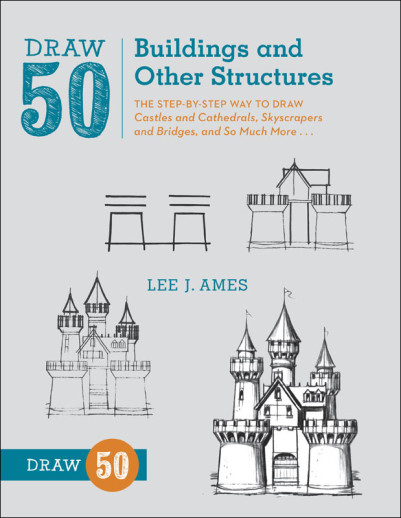We use cookies to make your experience better. To comply with the new e-Privacy directive, we need to ask for your consent to set the cookies. Learn more.
Draw 50 Buildings and Other Structures
Over the years, I have seen how-to-draw typebooks from nearly every major publisher comeacross the desk, some bad, some O.K., somegood, and some just terrific. These definitely fallinto the terrific category. We've carried one titlein this series for several years (Draw 50 Horses),and it has always been well-received, so we wereexcited to come across the rest of the titles in theseries. Lee Ames, a talented and well-knownauthor and illustrator breaks down a dizzyingarray of objects, from machines to animals to people,and shows clearly in several, easy-to-handlesteps how to begin drawing the object, how tobuild onto it, and how to finish it off for a solid,satisfying, even professional-looking result. Eachbook features 50 items to draw, each detailedon its own page, with the drawing-in-progressclearly illustrated in a single color (such as blue,red, or brown). For instance, if we are going totry drawing a small moving van from Draw 50Vehicles, the first step is a simple line (the ground)with three circles for the wheels. In the next stepan open box is added atop the wheels, as arethe base for the cab, and centers of the wheels,while the circles and line from the last step arefaded a bit, so that each new addition is clearlyrecognizable. The completed drawing is shown inblack and white, unlike the blue and white in theprogressing drawing, and stands ready for you toadd whatever colors or finishing touches you feelinspired to add to your own finished masterpiece.The black-and-white finished drawing is also greatfor tracing for the younger kids - or for those wholike shortcuts. Let me reiterate as well that unlikesome other how-to-draw books, the finished drawingsfeatured here are high-quality and detailed,far from more cartoon-ish results gathered fromother books I've seen. In short, the race cars andairplanes will please the mechanical artist, whilethe animal-lover will be satisfied with their renderingsof realistic, expressive animals. If I was goingto splurge on one how-to-draw book this year, itwould definitely be one of these. - Jess
| Product Format: | Softcover Book |
|---|---|
| Brand: | Random House |
| Author: | Lee J. Ames |
| Grades: | 3-AD |
| ISBN: | 9780823086047 |
| Length in Inches: | 10.75 |
| Width in Inches: | 8.5 |
| Height in Inches: | 0.125 |
| Weight in Pounds: | 0.45 |

